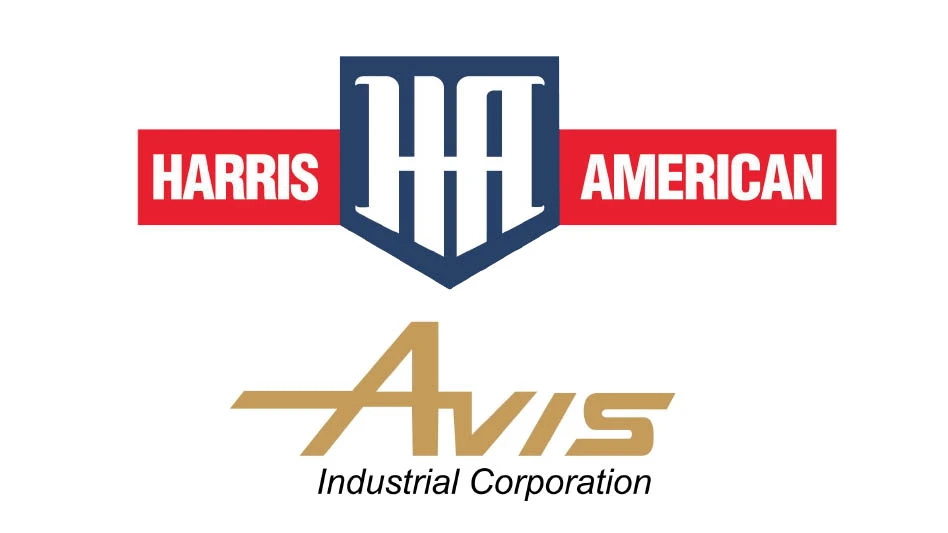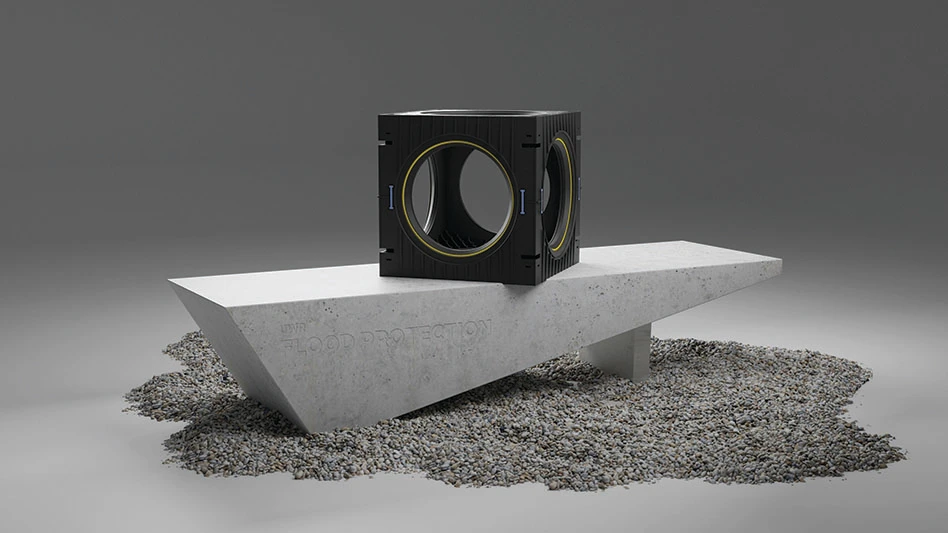
Change is a constant in the scrap industry; but, for nearly 100 years, W. Silver Recycling Inc. has been positioned in El Paso, Texas, in the right place to serve customers on both sides of the United States-Mexico border.
Founded in 1920, W. Silver has remained a family business all that time and has taken advantage of its location in a border city to maintain and expand its status as a global company.
While some aspects of the company’s operations have been steady, current CEO Lane Gaddy has taken several measures in the past 13 years to seek out ways to expand the footprint of W. Silver Recycling and upgrade its technology and management methods.
As it nears its 100th year in business, the company faces industry challenges, with trade disputes having particular relevance. Gaddy and his fellow company leaders, however, continue to keep watch over changing conditions and invest in ways designed to keep W. Silver Recycling poised to serve its customers in the U.S. and Mexico.
A river runs through it
W. Silver Recycling was founded “sometime around 1920 by William Silver,” says Gaddy. The business passed from William to his son-in-law Bernard Fenenbock, who is Gaddy’s grandfather.
Gaddy took over W. Silver in 2005 when it had two small locations and about 25 employees.
Since taking the reins of the company, Gaddy says he has focused “predominantly on ‘maquiladoras’ in Mexico and their suppliers across the border in the U.S.”
Maquiladoras stem from Mexico’s Border Industrialization Program, which was started in 1965. The program was designed to expand the U.S.-Mexico trading relationship beyond the agricultural sector, and it grew steadily even before the North American Free Trade Agreement (NAFTA) was ratified in 1994. In the late 1990s, after NAFTA was ratified, some 1,450 additional maquiladoras opened, according to the U.S. Commerce Department.
The thousands of factories and assembly plants that qualify as maquiladoras are predominantly in northern Mexico, not far from the U.S. border and the American consumers for whom their output is intended.
While refrigerators or automobiles may be the end products at such plants, scrap materials also are generated in steady amounts. “W. Silver specializes in managing the byproducts of its customers’ plants,” Gaddy says. “This includes ferrous and nonferrous materials mostly, but we also regularly manage paper, plastic
The strategy means W. Silver is active on both sides of the Rio Grande, the river that separates Texas from Mexico. In 2018, the company is building a new corporate headquarters “at the foot of the busiest international pedestrian bridge in the world, in downtown El Paso,” Gaddy says.
W. Silver Recycling has long had a facility in Albuquerque, New Mexico, providing some geographic diversity beyond El Paso.
Under Gaddy’s leadership, the company’s geographic footprint has grown considerably and now further reflects the international nature of W. Silver Recycling’s business model. In addition to two facilities in El Paso and the one in Albuquerque, W. Silver now also manages facilities in:
- Amarillo and Donna, Texas (Donna is a border town);
- Santa Teresa, New Mexico (a border town);
- Mexico City and Monterrey, Mexico; and
- Calexico, California. (This facility, also in the border region, is under construction as of April.)
The rise of the U.S.-Mexico border region as a manufacturing hub has provided fertile ground on which any scrap company located there can grow. Operational decisions and the philosophical direction chosen by Gaddy have allowed W. Silver Recycling to more fully take advantage of that circumstance.
Building scale
Veteran recyclers are usually quick to note the scrap industry is part of the service sector before one gets to the industrial operations aspects of the business.
While Gaddy, at age 35,
“Our focus on customer service and satisfaction is one of our largest assets,” he says. “We have a fully dedicated team that focuses exclusively on process improvement with our clients, regularly looking for the elusive win-win scenario.”
That team, whose members Gaddy emphasizes are “not in sales or scrap procurement,” focuses strictly “on customer satisfaction.” The team’s work with customers could involve addressing customs issues or other cross-border business aspects; finding ways to better segregate scrap; arranging to fabricate custom bins or containers; or upgrading
Managing the logistics of supply chains, especially in cross-border situations, can be a challenge. According to Gaddy, however, it also provides opportunities for W. Silver Recycling to distinguish itself.
“In ironing out channel costs, both parties are able to share in savings,” he comments. “This dedication to our customers has allowed for scalability throughout supply chains based on the positive feedback from our clients.”
The growth of the company’s geographic footprint stems from its focus “on servicing manufacturers throughout the U.S.-Mexico border region, as well as the interior of Mexico.”
With the geographic expansion has come an increase in volume. As of 2018, “W. Silver Recycling controls over 15,000 tons of ferrous scrap per month and 5 million pounds of nonferrous scrap—mostly red metals,” Gaddy says.
The company has invested in both equipment and people as it has grown. Its employee count, which stood at approximately 25 when Gaddy started as CEO in 2005, has now reached more than 300. “This includes W. Silver Recycling employees at our customer sites [who] help with administering our byproduct programs,” Gaddy says.
The company’s equipment investments include numerous trucks and containers, balers at each of its locations and a wire and cable processing line in El Paso, which has helped the firm serve customers in the electrical sector on both sides of the border.
Conducting business on both sides of an international border can add challenges, but Gaddy also says, “There
A geopolitical climate in which global trade is under the microscope is among the challenges that might test W. Silver Recycling’s ability to adjust to change in the next several years.

“W. Silver specializes in managing the byproducts of its customers’ plants. This includes ferrous and nonferrous materials mostly, but we also regularly manage paper, plastic and wood as a service to our accounts.” – Lane Gaddy, CEO, W. Silver Recycling
Diplomatic disruption
The cross-border nature of W. Silver Recycling’s chosen business model means “we are regularly dealing with many more variables than the traditional recycled materials site,” Gaddy says.
He continues, “We have foreign exchange rate risk, a shifting political climate around NAFTA, cross-border safety and security issues, plus different sets of laws and compliance to follow in two countries.”
The escalating trade friction between the U.S. and China is a concern to Gaddy as it is to other U.S.-based exporters of scrap. “W. Silver regularly sells material to U.S, Mexican
The first four months of 2018 have seen recycling-specific and wider trade issues arising that are affecting business models predicated on the open trading climate of the previous three decades.
More so than recyclers in other parts of the U.S., however, the Trump administration’s scrutiny of NAFTA is a clear concern to Gaddy, considering W. Silver Recycling’s location and business model.
“We are concerned with what is happening in Washington and have already seen some of our customers start shifting production back to Asia,” Gaddy says.
“In the last two to three years, we had seen a significant amount of
The unpredictability of the current geopolitical environment leads Gaddy to say, “We see significant volatility ahead. The best way to navigate this is to keep low inventory and monitor credit conditions of consumers to ensure any force majeure events do not cause large structural credit changes in the industry. We also believe there are opportunities for nimble companies out there.”
Gaddy’s comments indicate that while he is aware of the current and potential challenges in the market, he also has not lost sight of those opportunities.
Attentive and forward-thinking management is vital for recyclers wherever they may be located, according to Gaddy. “Proper processes, procedures
Faith in good management has prompted Gaddy to carry forward with plans that include a “60-acre regional hub in Santa Teresa, New Mexico,” and “a site under development in Calexico, California, to service the Mexican states of Sonora and Baja,” plus the new headquarters building in El Paso.
Some of the management team’s thoughts also turn to future capacity expansions, if the opportunity is right. “We already have a wide geographic footprint, if you look at our locations on a map,” Gaddy says relative to potential future growth. “I would see not so much spreading out farther but rather filling in that footprint.”
He characterizes W. Silver Recycling’s thinking as forward-facing. “We definitely have a good team and good management systems,” he comments. “We focus on working on the business rather than working in the business.”
No matter what the political or economic future may hold, Gaddy has every intention of managing W. Silver Recycling to prosper well into its second century.

Explore the May 2018 Issue
Check out more from this issue and find your next story to read.
Latest from Recycling Today
- Enfinite forms Hazardous & Specialty Waste Management Council
- Combined DRS, EPR legislation introduced in Rhode Island
- Eureka Recycling starts up newly upgraded MRF
- Reconomy Close the Gap campaign highlights need for circularity
- Nickel carbonate added to Aqua Metals’ portfolio
- EuRIC, FEAD say End-Of-Life Vehicle Regulation presents opportunity for recyclers
- Recyclers likely to feel effects of US-China trade war
- BCMRC 2025 session preview: Navigating battery recycling legislation and regulations





